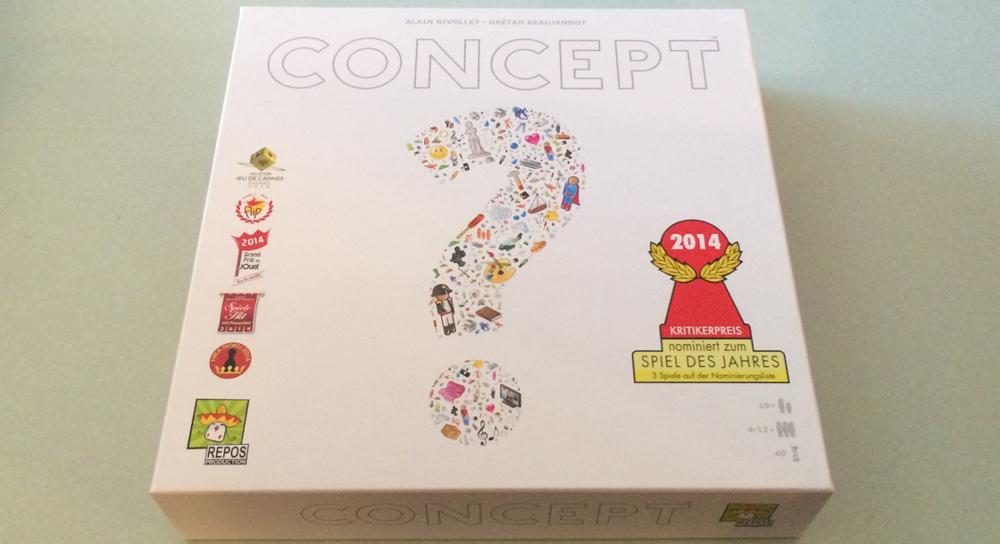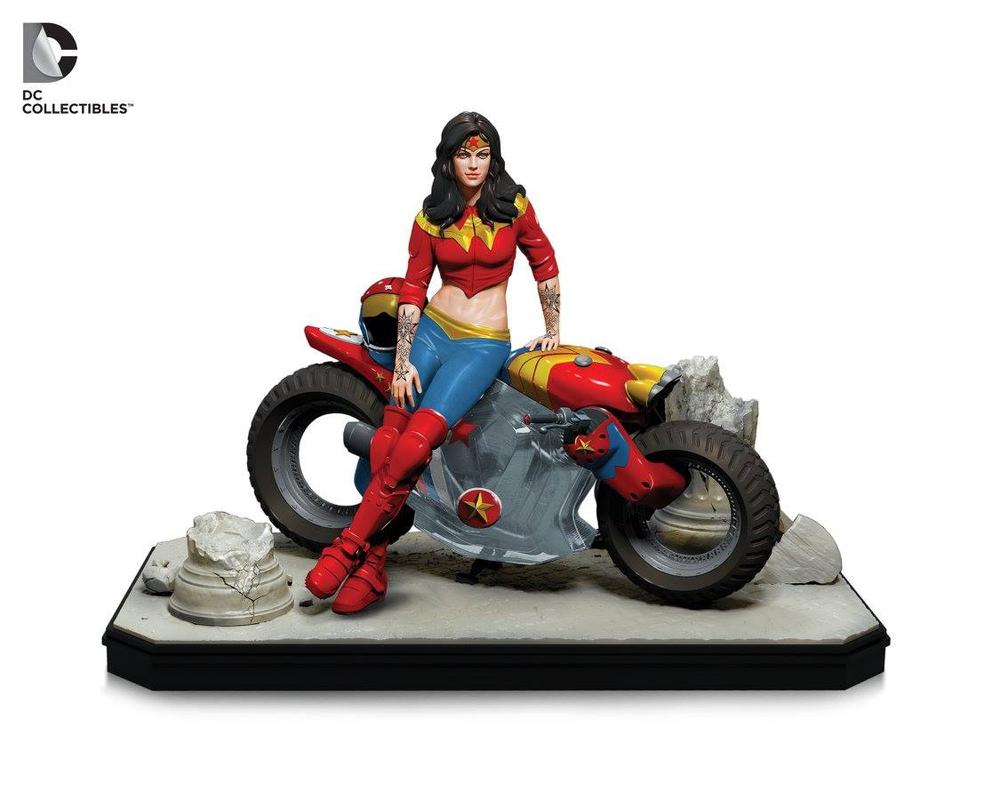
So many games that come out these days are just derivative works of other games. More resource management, trivia, drafting, or deck building. New game mechanics are rare. I mostly see companies plopping new themes on top of old ideas. But Concept is different from any game I’ve played before. It’s a logic/train of thought/guessing game that requires some strategy and a lot of creative thinking, though also knowing your fellow players is a big help since you’re almost working together to achieve points. You want the other players to guess what you’re trying to convey, otherwise no one gets points for that round.
Concept requires a particular way of thinking. Not so much a strategy of planning several moves ahead, but rather of crafting a path of abstract clues to get the other players to guess your word or phrase. It appeals greatly to my logical brain.

The Basics
- For ages 10 and up
- For 4-12 players
- Takes 40 minutes (so says the box; I disagree)
The object of Concept is to guess words or phrases through the combination and order of icons chosen. A team of two players draws a card and chooses a word or phrase that others need to guess. The 110 concept cards each have three categories (easy/hard/challenging) with three options each. Teams can choose any option on the card they like, but it is encouraged to stick with the easy words for the first few games. The team then places pieces next to icons on the board that describe the word or phrase, but in the order that it makes sense. There are different colors of pieces so the team can describe different aspects of the word or phrase, but it takes practice to do this well and for the guessers to follow the train of thought. The first player to discover the word or phrase and call it out gets 2 victory points, with the players on the placing team each receiving 1 victory point. Then the next group of two players form a team. Once all 12 of the double victory point tokens have been awarded, the game ends. Whoever has the most points at the end of the game wins.
The box is organized well, with spots for all of the bits (no sorting!) and a removable plastic bowl to use during gameplay. Plus the art caught my eye right away. The board folds up, and everything fits in snugly.
One look at the playing board and you can see how abstract the ideas are. Size, color, man, woman, family, geography, fiction, history, object, tool, metal, wood… It reads like one of those alchemy games where you combine elements to make new ones. Players use printed guides that describe what all of the icons are for, which is good because some of them are less obvious than others, but these are just guidelines. Players can use the icons for whatever they like; it doesn’t have to match the descriptions on the guide. The instructions also include many examples of clue combinations to give you an idea of how the game is played.

Start with the green question mark pawn to begin the main concept. Then use green cubes to further describe it. If you have another part of the word or phrase or a subconcept to describe, start by using the exclamation point pawn of another color, and then that color’s cubes. There are five total colors to use, so descriptions can get elaborate.
If your team struggles, you can scrap your whole set of clues and start over with a different tactic. Since there doesn’t seem to be a time limit, you’re not restricted there. But that can also make the game drag on and on, depending. You might want to set some house limits.
Team members can communicate with each other discretely to make sure they’re using the same strategy. Team members don’t need to take turns placing cubes, and there are no restrictions on the type or number of cubes placed/clues given, as long as you don’t run out of cubes. But sometimes if you give too much information, it can confuse the guessers. If no one guesses correctly after a while, the team can bring on a third person to help them place clues. But if that doesn’t work, the turn is over.

The game’s original playtesters did find that it was more fun to skip the point system and just place clues and take guesses. We thought so, too. Along that vein, variations and customizations are encouraged, but it’s probably a good idea to play by the rules using the easy clues for the first game or two, to figure out what you like and don’t like about the standard rules before going off book.
We played the game with four people, and it worked out okay, but that only left two people guessing the clues. If both people get stuck on the wrong train of thought, the clue is never guessed. It would probably work much better with larger groups, or, if playing with small groups, having just one person placing clues.
Some of the clues were very easy for us (like “shooting star,” which my daughter got in two seconds and two clues), but for others, the group couldn’t guess even after 15 minutes, despite their best effort (my “Yoda” descriptions went un-comprehended, with several lines of description), so I’m not sure how well the levels are balanced. Though the age recommendation does go down to 10, it takes a certain kind of thinking that some younger kids just might not get for a while. Even adults can have a hard time.
And forget the time estimate of 40 minutes. We have no idea how 12 clues would be guessed within that amount of time. That’s less than four minutes per guess, assuming they all managed to be guessed in the first place. One way to combat this is to set a time limit per turn. Or, say you’ll play for a certain amount of time or for a certain number of rounds. This game, with its general pictographs and its universal pieces, makes it easy to be creative with the rules and play style. The instructions themselves encourage deviation from the “official” way to play.

For first time players, I recommend a clear reading of the instructions, and five to ten minutes’ study of the icons and their descriptions. Being familiar with what’s there and what each icon means speeds things up and makes players’ descriptions (by placing cubes) much clearer, since they won’t forget what is available.
Despite our difficulties, Concept definitely gets a thumbs up from me, simply because it’s not like every other game out there. But the fact that it requires logical and sequential thinking, can cause uproarious laughter, and is good for large groups solidifies its place on our game shelves.
Concept has been nominated for or won many awards, and its board even comes in a large, playmat version.
Note: A copy of the game was provided for review purposes.




My roommates and I adore this game! It’s high in replay value, never gets old, and really lets you see how everyone else thinks. I also love that you can play, if you choose, as long or as short as you want. And since it’s so easy to teach and isn’t really all that intimidating, I can take it home for holidays, to work for game lunches, and play it with groups that have no gaming experience whatsoever. It’s a great game all around!
Glad you enjoy it! I look forward to playing it more with a larger variety of people.